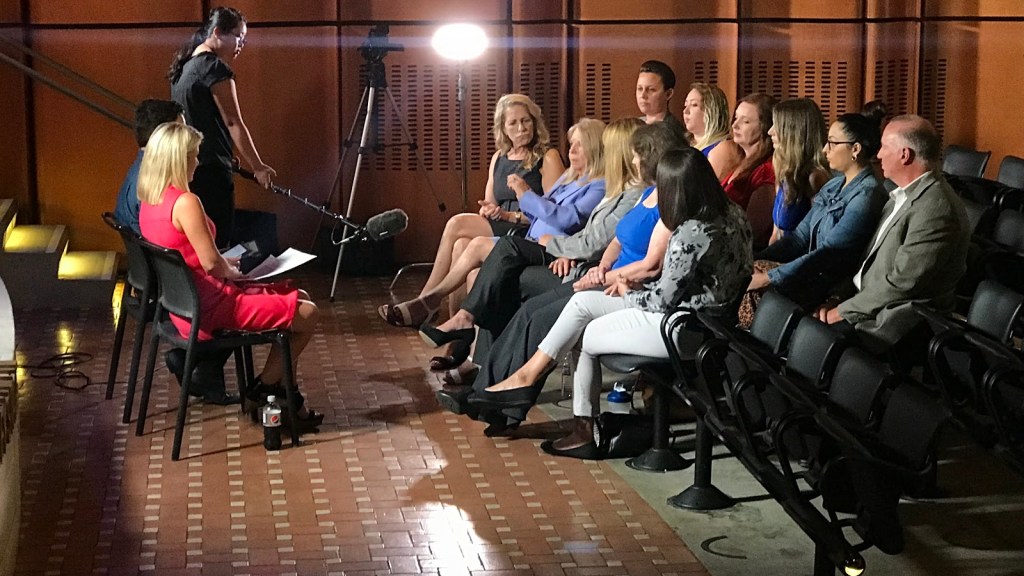“STOLEN” is a year-long NBC 7 investigation into the sex trafficking and exploitation of children in San Diego County. The seven-episode documentary series is told from the perspective of survivors, advocates -- even traffickers, and sex buyers, explaining the depth and scope of this problem in our communities and our schools. And with more children online during the coronavirus pandemic, experts say they are at greater risk of exploitation now more than ever. “STOLEN” celebrates the strength of survivors and their families, as they struggle to free themselves from the bonds of sex trafficking. See the full series here.
More and more children in San Diego County are falling prey to sexual exploitation every year but those who work with victims say local officials are not doing enough.
“There are not enough resources in San Diego; there are not enough resources across the country -- it’s a very sad part of my job,” said Susan Munsey, founder of GenerateHope and a sex trafficking survivor.
The groups say, on average, they have to turn away 20 to 30 children a month because they simply do not have space or means to offer them housing and support.
The limited access to services is just one of several startling facts that advocates from 10 sex trafficking resource groups shared with NBC 7.
The roundtable discussion was organized as part of a year-long NBC 7 investigation into the sex trafficking and commercial exploitation of children in San Diego County and the U.S.
Members of the roundtable discussion told NBC 7 that there are many misconceptions surrounding human trafficking. Before the larger problem is addressed, those misconceptions must be dispelled.
“A majority of San Diegans think of human trafficking as happening elsewhere,” said Susan Johnson, co-founder of the Alabaster Jar Project, a group that provides housing and resources for women who have survived human trafficking and sexual exploitation. “It's not out there, away from us, across the border. It's our own girls and our own boys from our own neighborhoods.”
The advocates shared stories, both personal tragedy and heart-wrenching tales of things they have witnessed. Their voices, regardless of their role, were full of sadness and defiance.
But their message was clear: San Diegans need to understand this problem before they find themselves or ones they love in the middle of it.
“(In June 2019), we had six women in our home. We had a teenager, somebody in their 20s, 30s, 40s, 50s and 61,” Munsey said.
The founders of a local survivor resource group and a survivor herself talked more about resources needed in San Diego County on this podcast episode of "Into San Diego." Listen to the episode below.
Advocates say finding homes or places for victims of trafficking or exploitation to live is a crucial first step. The groups say, on average, it costs up to $250,000 a year to secure a home with six beds for children and pay staff -- money that needs to be spent.
For survivors, healing often begins at a group home. In some cases, the homes are run by victims who managed to escape the chains of sex trafficking, making it easier for those recovering to share their experiences.
My daughter will not live the life that I have lived. And every woman that I can touch, she will not live the life I lived.
Marjorie Saylor, Founder of The Well Path
Johnson says her past was one of the reasons she opened up homes and offered resources to victims through the Alabaster Jar Project. Her introduction to sex trafficking, like other victims in San Diego County, occurred because of growing up near one of the region’s many military bases.
“I was that vulnerable young woman at 12 and 13 years of age that grew up on Camp Pendleton and was solicited by Marines on a daily basis,” Johnson said.
San Diego’s large military population along with the region’s wealth and access to transportation are among the reasons for San Diego’s thriving sex trafficking industry.
And while San Diego’s proximity to Mexico has been said to fuel the industry here, experts say this is a common misconception and most victims live in San Diego.
Marisa Ugarte, the founder of the Bilateral Safety Corridor Coalition, says San Diego’s military community is glossed over as a contributor to the problem and that something needs to be done about it.
“Number one sex buyer in North County and in the South Bay is the military,” Ugarte said. “And we're not addressing it.”
Other survivors who spoke with NBC 7 said the same thing, that members of our local military were often part of their sex buyer customer base.
A spokesperson for the Navy, Brian O’Rourke, told NBC 7 that each year, every sailor has to attend “mandatory training on the significant threats and legal consequences faced by those who participate in such activities.”
We take these issues very seriously, Navy-wide and in San Diego.
Brian O’Rourke, Navy Spokesman
Ugarte and the BSCC are one of the San Diego-based points of contact for the FBI’s National Human Trafficking Hotline and, like other organizations, Ugarte says they are constantly scrambling to find resources for survivors.
Another misconception is that once a survivor leaves the lifestyle, the recovery process is over.
“People do not understand that the victim's story does not end with them leaving the life or being pulled out of the life,” said Kristi Wells of the Safe House Project. “They don’t understand the deep need for restorative care.”

CRITICAL SHORTAGE OF SURVIVOR SERVICES
During the roundtable discussion, survivors and advocates said the county has so far failed to respond to the spike in sex trafficking in San Diego County.
One such example: A series of warning signs about the shortage of beds or homes for children who were rescued from sex traffickers.
Concerns over a shortage of beds and homes were confirmed in 2014 after a new state law required counties to implement certain protocols for child victims of sex trafficking. In a subsequent report, produced by San Diego’s CSEC Advisory Panel, officials found the county had no beds available for children.
Five years later, little progress had been made on that front.
By 2019, the San Diego County Grand Jury released another report titled “San Diego Needs Essential Services” where they concluded the county only had 38 beds for children believed to be victims of trafficking or exploitation.
A spokesperson for San Diego County’s Child Welfare Services says the county has added 12 additional beds, bringing the total to 50, as of August 2020.
Advocates say it's still not enough. The latest Grand Jury report in 2019 cited one agency had been turning away “20 to 30 children” each month.
“It's an outrage,” said Susan Johnson of the Alabaster Jar Project. “Now, if we had funding, we would be able to have the capacity to hire the staff and be able to open more programs.”
Kristi Wells of the Safe House Project says if the problem isn’t stopped, traffickers will continue to have the upper hand.
“We're allowing organized crime to grow at a rapid rate in our communities because we're not willing to provide the funds for victims’ services,” she said.
SURVIVORS SAVING SURVIVORS
While resource groups say the county is lacking in some areas, there are dozens of county employees dedicated to helping survivors. Employees like Marcia Harrison.
Harrison walks through the headquarters of San Diego County's Commercial Sexual Exploitation of Children building. Her gait is quick and confident. She slows as she explains why she has such a connection to survivors; she is one.
“I am a survivor of child sexual assault,” Harrison said. “For me, this was life. It was normalized from childhood.”

Harrison says looking back on her life, she sees red flags and warning signs -- signs that were ignored by the adults around her. She says teachers would excuse her acting out in class as just “teenage rebellion,” not realizing that it was a cry for help.
“I was asking for help but in a different way, without saying the words because I didn't know how to say it,” Harrison said. “All of it cycled into adulthood.”
There are days where it is a battle and a half … but there is hope.
Marcia Harrison, Survivor/Advocate
As a Victim Services Coordinator with the San Diego City Attorney’s Office, Harrison is now using those painful moments to spot those signs in other victims of exploitation and help them cope with their trauma.
STATE LICENSING SLOWS DOWN RESPONSE
Securing a new start for survivors of sexual exploitation also presents challenges. Advocates say it’s not as simple as relocating children recovering from this kind of abuse into residential programs or foster care.
“Human trafficked kids need a program that is focused on them,” said Lynn Burgard with the Hidden Treasures Foundation, a nonprofit that provides residential therapeutic services to teenage girls who are victims of commercial sexual exploitation. “Right now, kids are put into different residential treatment homes -- they are housed with severely emotionally disturbed kids or other kids -- and it's causing a lot of problems.”
In February 2020, Hidden Treasures finally opened its doors, adding six additional beds for trafficked children in San Diego County.
But to get to that point, Burgard says she had to go through California’s licensing system for approving new homes, which is a painfully slow process that requires a lot of capital.
“$95,000 has gone into maintaining this home that I have to keep empty until I'm licensed. And I have to have the home to go through the licensing process. So, I'm in this catch-22 of bleeding out money for a home that can't be used," Burgard said.
California requires homes to be empty when applying for a license, so Burgard could not rent out the home while waiting for license approval. It ended up taking Hidden Treasures 16 months to receive a license.
“It's a snag that's going to keep you hung up with an empty house not serving its survivors,” Burgard said.

